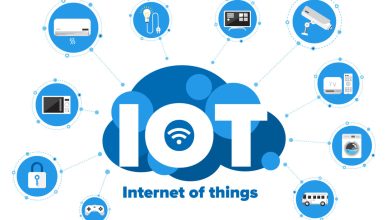Augmented Reality (AR)

What is Augmented Reality (AR)?
Augmented Reality (AR) is a technology that overlays digital information, such as images, sounds, and other data, onto the real world. This blending of virtual elements with the physical environment creates an interactive experience that enhances our perception of reality. AR differs from Virtual Reality (VR), which immerses users in a completely virtual environment. Instead, AR enriches the existing world, offering users an enhanced view of their surroundings.
This article explores the fundamentals of augmented reality, its applications, benefits, and challenges, and its future potential.
Understanding Augmented Reality Technology
At its core, AR relies on a combination of hardware and software to function effectively. Key components include:
- Hardware – Devices such as smartphones, tablets, and specialized AR glasses are commonly used to deliver augmented experiences. These devices are equipped with cameras, sensors, and processors that detect the real environment and superimpose digital content.
- Software – AR applications use software to process the data from the device’s camera and sensors. This software identifies physical objects and determines how to position digital elements in relation to them.
- Display Technology – AR can be experienced through various display technologies. Some common methods include heads-up displays (HUDs), smartphone screens, and smart glasses that project digital information directly onto the user’s field of vision.

Applications of Augmented Reality
Augmented reality has a wide range of applications across various sectors. Here are some notable examples:
- Gaming – One of the most popular uses of AR is in gaming. Games like Pokémon GO allow players to interact with virtual creatures that appear in real-world locations. This innovative approach to gaming encourages physical activity and social interaction.
- Education – AR enhances the learning experience by providing interactive and immersive educational content. Students can explore complex subjects like anatomy, physics, and history through engaging visualizations that bring concepts to life.
- Retail – Retailers use AR to enhance the shopping experience. Customers can visualize how products, such as furniture or clothing, will look in their space or on themselves before making a purchase. This feature helps reduce returns and increases customer satisfaction.
- Healthcare – In the medical field, AR aids in surgical procedures by overlaying critical information onto the surgeon’s view. This technology can display patient data, anatomical visuals, or surgical guidelines, improving precision and outcomes.
- Real Estate – AR allows potential buyers to visualize properties before they are built. By overlaying digital models onto vacant land or existing structures, buyers can get a better understanding of the space and layout.
- Navigation – AR enhances navigation by providing real-time directions and information directly in the user’s field of vision. Apps like Google Maps use AR to overlay directions on the real world, making navigation more intuitive and user-friendly.
Benefits of Augmented Reality
The adoption of AR technology offers several advantages across various sectors:
- Enhanced User Experience – AR creates engaging and interactive experiences that captivate users. By blending digital content with the physical world, it offers a unique way to interact with information.
- Improved Learning and Retention – Interactive AR experiences can enhance learning outcomes by making complex concepts more accessible. Studies show that users retain information better when they can visualize and interact with it.
- Increased Efficiency – In industries like healthcare and manufacturing, AR can streamline processes and improve efficiency. By providing real-time information and visualizations, AR helps professionals make better decisions quickly.
- Cost Savings – AR can reduce costs in several ways. For example, in retail, virtual try-ons can minimize returns, while in manufacturing, AR can reduce errors and improve training processes, leading to cost savings over time.
- Collaboration and Communication – AR fosters collaboration by allowing teams to visualize and interact with data together, regardless of their physical location. This enhances communication and supports remote work.
Challenges of Augmented Reality
Despite its many benefits, AR also faces several challenges that may hinder its widespread adoption:
- Technical Limitations – The effectiveness of AR relies heavily on hardware and software capabilities. Limitations in processing power, battery life, and connectivity can affect performance and user experience.
- User Acceptance – Some users may be hesitant to adopt AR due to privacy concerns, a lack of understanding, or discomfort with new technologies. Overcoming these barriers requires effective education and outreach.
- Content Creation – Developing high-quality AR content can be resource-intensive and time-consuming. Companies must invest in the creation of engaging and relevant experiences to attract and retain users.
- Interoperability Issues – The AR ecosystem comprises various devices, platforms, and applications. Ensuring seamless interoperability between these elements can be a challenge, potentially limiting user experience.
- Privacy and Security Concerns – As AR applications often rely on user data, privacy and security are paramount. Developers must implement strong data protection measures to build trust with users.

The Future of Augmented Reality
The future of AR is promising, with several trends shaping its development:
- Advancements in Hardware – As technology evolves, we can expect improvements in AR hardware, making devices more powerful, compact, and affordable. Enhanced optics and processing capabilities will enable more sophisticated AR experiences.
- Integration with AI – The combination of AR and artificial intelligence (AI) will lead to smarter applications that can recognize objects and provide personalized experiences. This integration can enhance interactivity and usability.
- 5G Technology – The rollout of 5G networks will revolutionize AR experiences by providing faster data transmission and lower latency. This connectivity will enable more complex and interactive AR applications.
- Increased Use in Business – Businesses are increasingly recognizing the value of AR for training, marketing, and operations. As companies invest in AR solutions, we can expect to see wider adoption across industries.
- Focus on Social Experiences – Future AR applications may emphasize social interactions, enabling users to share and collaborate in real-time AR environments. This shift will create new opportunities for social networking and community engagement.
Conclusion
Augmented Reality (AR) is transforming how we interact with the world around us. By blending digital content with the physical environment, AR enhances experiences in gaming, education, healthcare, retail, and more. Despite its challenges, the potential benefits of AR are immense, making it a valuable tool for businesses and individuals alike.
As technology continues to advance, AR will become increasingly integrated into our daily lives. Embracing this technology will unlock new possibilities for learning, collaboration, and entertainment. In a rapidly evolving digital landscape, augmented reality stands out as a transformative force, reshaping how we perceive and engage with our environment.




